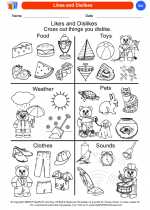Lithosphere
The lithosphere is the outermost solid part of the Earth. It includes the crust and the uppermost part of the mantle. The lithosphere is divided into several tectonic plates that float on the semi-fluid asthenosphere below. These plates are in constant motion, which can result in geological phenomena such as earthquakes, volcanic activity, and the formation of mountain ranges.
Composition
The lithosphere is primarily composed of rocks and minerals, with the crust being made up of lighter granitic rocks and the upper mantle consisting of denser, magnesium-rich rocks. This composition gives the lithosphere its rigid and solid characteristics.
Thickness
The thickness of the lithosphere varies depending on the location. Oceanic lithosphere is thinner, averaging about 100 kilometers in thickness, while continental lithosphere is thicker, with an average thickness of around 150 kilometers. However, the thickness of the lithosphere can range from as little as 30 kilometers to as much as 200 kilometers.
Importance
The lithosphere plays a crucial role in supporting life on Earth. It provides a solid surface for the existence of ecosystems, acts as a reservoir for valuable resources such as minerals and fossil fuels, and influences the distribution of water and atmospheric gases. Additionally, the movements and interactions of the lithospheric plates shape the Earth's surface and contribute to the dynamic nature of the planet.
Study Guide
When studying the lithosphere, it's important to focus on the following key points:
- Understanding the composition and structure of the lithosphere, including the differences between the continental and oceanic lithosphere.
- Exploring the mechanisms of plate tectonics and the movement of lithospheric plates.
- Identifying the geological features and phenomena that result from interactions within the lithosphere, such as earthquakes, volcanic eruptions, and the formation of mountain ranges.
- Recognizing the importance of the lithosphere in supporting life and influencing Earth's systems.
By mastering these concepts, students can develop a comprehensive understanding of the lithosphere and its significance in the study of Earth science.
[Lithosphere] Related Worksheets and Study Guides:
.◂Science Worksheets and Study Guides Kindergarten. Me and My Family

 Coloring Worksheet
Coloring Worksheet
 Coloring Worksheet
Coloring Worksheet
 Coloring Worksheet
Coloring Worksheet
 Coloring Worksheet
Coloring Worksheet
 Coloring Worksheet
Coloring Worksheet
 Coloring Worksheet
Coloring Worksheet
 Coloring Worksheet
Coloring Worksheet
 Coloring Worksheet
Coloring Worksheet
 Coloring Worksheet
Coloring Worksheet
 Coloring Worksheet
Coloring Worksheet
 Coloring Worksheet
Coloring Worksheet
 Coloring Worksheet
Coloring Worksheet
 Coloring Worksheet
Coloring Worksheet
 Coloring Worksheet
Coloring Worksheet
 Coloring Worksheet
Coloring Worksheet
 Coloring Worksheet
Coloring Worksheet
 Coloring Worksheet
Coloring Worksheet
 Coloring Worksheet
Coloring Worksheet
 Coloring Worksheet
Coloring Worksheet
